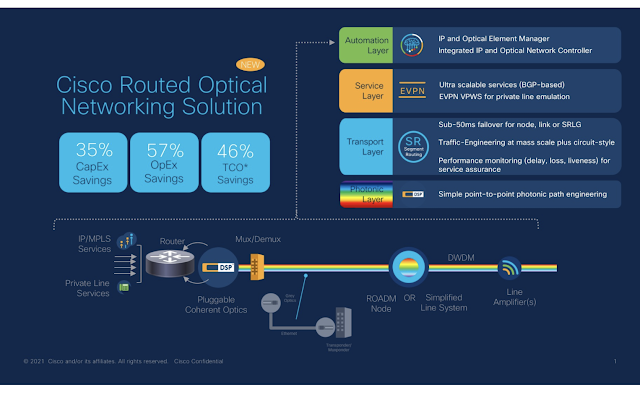BT has agreed to test Nokia's next generation FP5 network processing silicon, including its 800G interfaces.
FP5 is the new heart of Nokia’s IP service routing platforms capable of supporting high density 800G routing interfaces. FP5 will also enable flow-based encryption capabilities, while promising a 75% reduction in power consumption.
BT operates the largest IP network in the UK with peak rates above 25Tbps, powered by Nokia’s 77xx family of routers. With this trial, BT is the first in the UK to test the 800G interfaces on IP routers, helping to ensure the most cost-efficient scale and capacity where its future UK customer traffic demands.
Neil McRae, Managing Director and Chief Architect at BT, said: “With FP5, Nokia continues to innovate to ensure IP networks have the scale, flexibility and features to help us manage increasing demand from our residential, mobile and business customers. We’re eager to trial its capabilities as we grow our network capacity – part of our Best Network strategy for meeting our customers’ future needs.”
Rafa de Fermin, VP Network Infrastructure at Nokia, said: “This FP5 trial is an extension of the strong partnership and collaboration between BT and Nokia to build the multiservice network that runs the UK now and in the future. Key to this trial will be FP5’s capability to support high-density standards based QSFP-DD 800 ports, which are immediately available with the FP5 and a real differentiator for Nokia.”
https://www.nokia.com/networks/technologies/fp5/
Nokia launches its FP5 network processing silicon
Nokia unveiled its fifth-generation FP5 IP routing silicon capable of powering 800GE routing interfaces in service provider networks. Nokia promises a 75% reduction in power consumption and new embedded line rate, flow-based encryption capabilities. FP5-based platforms will be available starting in the first half of 2022.
Nokia's FP5 is a fully programmable network processor (NPU) for Nokia’s IP service routing platforms. The company says the FP5 is the first ASIC on the market to deliver up to 48 ports of QSFP-DD 800 without further hardware or fabric upgrades. Some highlights:
Security: With the current generation FP4 silicon, Nokia transformed volumetric DDoS defense with router-based detection and mitigation. With FP5, Nokia brings an additional layer of network protection with the introduction of ‘ANYsec’ - a new line rate, flow-based encryption capability integrated directly into the chipset. ANYsec supports the delivery of secure IP services including MPLS and segment routing, on-demand and at scale without impacting performance or power efficiency. Service providers can now ensure the integrity and confidentiality of all data flowing through their networks.
Network Capacity. Nokia service router platforms are the first to support high-density 800GE and 1.6 Tbps clear channel routing interfaces for applications including mobile transport, IP core, peering, BNG and provider edge. New FP5-based line cards will support 14.4 Tbps (19.2 Tbps with Nokia’s intelligent aggregation capability.) A new series of fixed form factor 7750 Service Router-1 platforms enable the benefits of FP5 to also be realized in smaller network locations.
Energy Efficiency: Nokia’s FP5 network processors drive down power consumption per bit by 75%. As FP5 is backwards compatible with FP4 and fully integrated into the latest versions of Nokia’s Service Router Operating System (SR OS), all existing features are supported from day one on the new hardware.
Some specs:
- 4.8 Tbps
- delivered with a 2.5D system-in-package (SiP) construct
- First NPU to support 100G SERDES
- Largest device in the industry using line rate memories everywhere, for both buffering and tables, in a completely deterministic configuration
- First NPU with embedded line-rate network encryption for L2, L2.5 and L3
- First to support multiple 1.6 Tbps clear channel flows
- Support for 400G ZR/ZR+, 800G and 1.6 Tbps speeds
- External MAC ASIC with QoS pre-processing, pre-classification, pre-buffering and first level DDoS protection and encryption
Federico Guillén, President of Network Infrastructure, Nokia, said: “Of all the things that are surprising about human beings, perhaps the most surprising is our ability to be surprised. Our customers require their networks to be robust, agile and adaptable enough to handle everything life throws at them – from disruptive security threats to a global pandemic. FP5 is a significant step forward in performance, security and efficiency and – in combination with our software excellence and investment in network automation and tools – it opens the next chapter in Nokia’s long-standing leadership in IP networking and IP silicon innovation.”













































